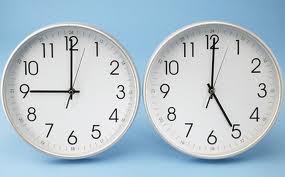I spend a considerable amount of time in supermarkets. Part of the reason is that I shop for different items in different stores. The other part is I there is always something I need, forgot, or have to get before a sale is over. There are times when I have actually forgotten an item I wrote down on a list. Other times I didn’t get the main product I went out for in the first place. Despite these issues, or maybe because of them, I have noticed certain problems in most stores. They might not bother everyone, but to me, and others I often find myself helping, they are always present. Move over Letterman…here are my top five.
5. Narrow aisles. I don’t understand why the aisles aren’t wide enough to let carts go by in different directions without crashing into each other. How many times do you have to say “excuse me” or “sorry” when cruising down these rows. During busy times, this can be a cause of indoor road rage.
4. Items placed too high. I am 5’4’ tall. Ok, maybe a little less. I cannot always reach the items placed high on a shelf. It gets worse when they stack the items on top of each other. My choice is to stand on the bottom shelf, or find a way to knock down a box without the whole shelf coming down. The dairy section is trickier since milk, juice, etc. are placed on racks. Once the first two are taken, the others are so far back I can’t reach. It has been documented that stores place the pricier items at eye level. My looking up, and down, taught me that trick long ago.
3. Looking like a department store. In rural areas I can understand the need to carry products besides your typical groceries. For those of us who have access to the mall, as well as department and big box stores, we don’t need row and rows of items we can get somewhere else. How many people purchase those items in the supermarket? The space could be used more efficiently. See number 5.
2. Reading the small print. I love those little tabs they place near a sale item. The print has a font size in the negative numbers. Not only do you have to make sure of the date, but only a certain size may be on sale, and the tab might not be directly under the product. If the item comes in a variety of flavors….watch out. Whole wheat may be on sale, but not whole grain whole wheat. Chunky peanut butter, but not smooth. 100 oz. bottle of detergent, but not the one that is fragrance free. Why does it have to be so confusing?
1. Wet produce. This is the one that irks me the most. A simple lesson in biology is required here. Once a plant is picked and separated from its root system, it does not absorb water. I can’t stand wet lettuce and parsley. It is drenched, you can’t get it in the bag, and it disintegrates into a mess within days. I also can’t stand the bags of wet carrots. I stopped buying the baby ones because they are too slimy. Even the whole ones are wet at times. I can’t count the number of times those automatic sprayers have gone on when my arm in fully extended under them. Please, I don’t need a shower.
Every now and then, I see the district managers walking around with store management pointing out this and that. I wonder what they are looking at. I wonder what study or plan they have developed to make shopping better. I have an idea or two (or five) for them. Maybe they should actually talk to the “average” shopper. Oh well, I’ll be back in their stores soon enough. Probably tomorrow. As they always say, Have a Nice Day!



